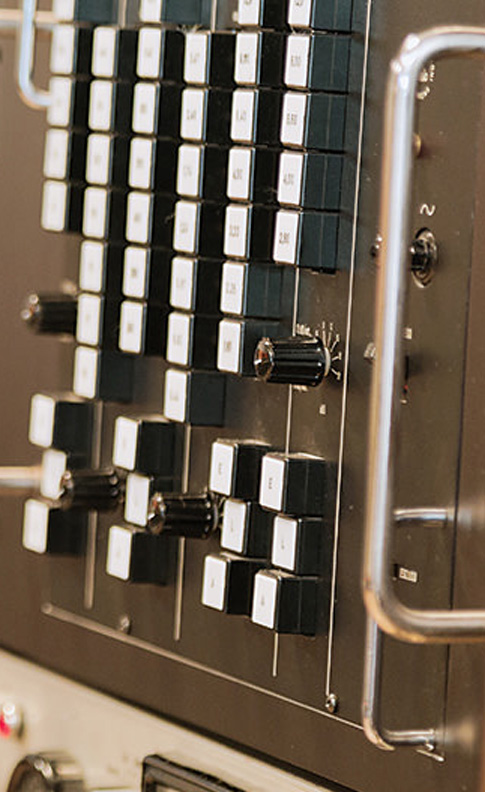Coming from a family of jewelers in Iowa, and growing up fascinated with small scale measurements and attention to detail, Eric Heiserman became a DIY community mainstay by manufacturing an established line of classically-based capsules for replacement or microphone modification. Now located in North Carolina, Heiserman's manufacturing, design, and assembly is all done strictly in-house and made in the USA. The H47 is their first proper microphone.
This large diaphragm, side address condenser mic is based on the classic studio workhorse, the Neumann U 47fet,and visually speaking there's no mistaking what they're aiming for here. The H47 is minimal and chunky,with a side arm mount, an offset XLR connection,and beautifully solid constructionthat's designed for day in/day out use. The inner construction of the H47s all through hole circuitry is as solid as the exterior. There's something to be said for designing a microphone that can sit inside a kick drum hour after hour. The amount of energy that the mic is exposed to demands that it be expected to withstand a near continual shaking and battering. The H47 is ready to work, and work hard.
Available in three different colors (Flat Black, Rust Red, and Classic Gray), they're all flat finishes, and though the red version is (thankfully) fairly muted, it's a bold manufacturing option, nonetheless. Features are pretty simple and familiar: there are two pad switches, -10 dB and -6 dB, as well as a 140 Hz high-pass filter switch on the rear of the mic, opposite the front badge logo. Sticking with the overbuilt theme,the H47 comes in a quite fancy Pelican case that will definitely protect the mic in transit – totally made to transport between studios/gigs, and can probably get thrown off of a truck, then continue to work perfectly (I did not test this theory).
When I first received the H47, I was beginning a tracking session at Gus Seyffert's Sargent Recorders [Tape Op #118]. Engineer Sean Cook and I compared it directly with the studio's vintage Neumann U 47fet. Given the Neumann's dominance on kick drum, it seemed the proper place to make an initial comparison. Going through a pair of Neve 1073s with no EQ, the difference was easy to hear at first, but Sean commented, "Well, I'd normally EQ the (Neumann) U 47 a little, just one click, like this... okay... and let me see, on the H47 with just one click over here... needs a different band..." – and just like that, I couldn't tell the difference. A little mid boost on the Neumann, then a little upper mid cut on the H47, and they were indistinguishable from each other. It was remarkable, and the H47 stayed put on the kick for the first few days.
Heiserman claims that the H47 is "true to the original circuit" and of course I found that it sounded incredible on low frequency sound sources, but still sweet and natural sounding. It was excellent on every source we put it on. In addition to kick drum, it was equally fit for vocals and especially balanced and honest on piano and acoustic guitar. The H47 is also an extremely quiet microphone – it sounded wonderful on soft fingerpicking. Later, I especially appreciated that when setting up to record acoustic guitar being performed on the couch in my own studio, the sound I heard through headphones from the H47 while placing the mic was uncannily close to the actual sound of the guitar in the room.
This is a no muss, no fuss recording tool, and I loved using the H47. Tracks recorded with it became the foundational sonic core of mixes and were always really simple to work with. Versatile, made in the USA with Heiserman capsule DNA, and capable of handling almost any general instrumentation situation (as well as vocals) with a sound that is harmonically balanced, pleasing, and musical to a fault, the H47 is a mic that easily finds its worth on every session – a stellar mic. Well worth the price. Super solid. Sounds totally pro, as in fucking proper!




_disp_horizontal_bw.jpg)